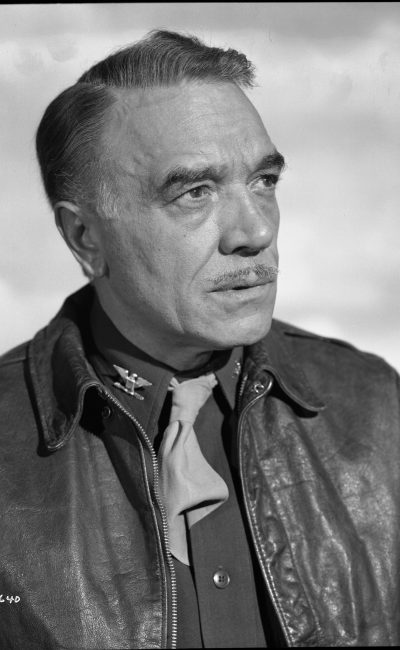Walter Abel
ActorBiografía
A familiar character face in movies and television, Walter Abel was a dedicated stage actor who had studied at the prestigious American Academy of Dramatic Arts in New York before moving on to a progression of stage work that culminated in his first appearance on Broadway in the original play “Forbidden” in late 1919. The year before he had just dabbled in the relatively new film industry doing Out of a Clear Sky (1918) directed by prolific silent actor and director Marshall Neilan. Abel did just one other silent and then moved back into serious stage work for ten years (including doing some road productions in 1924) before once again surfacing in film for the first sound version of the play Liliom (1930). Perhaps he was enticed with doing the play on film, but his was a small part and the sound of early talkies – as usual – was lousy. Once again Abel returned to Broadway and worked steadily from late 1930 into part of the 1934 season. He would have some 40 Broadway roles in his career. About that time his stage success was noticed by Hollywood, and he was signed with RKO. The studio had decided to do the first sound version of Alexander Dumas’ The Three Musketeers (1935) which first appeared as a silent in 1922 with Douglas Fairbanks. The part of the enthusiastic but novice D’Artagnan really called for a younger actor reflecting those traits, and RKO decided to go with Abel. He had a bright voice and an animated style of theater acting that seemed a good bet. It was all the more impressive considering Abel was in his mid 30s – but he looked younger. RKO did not skimp on the film. The director was Rowland Lee, who had just finished another Dumas filming, The Count of Monte Cristo (1934) with Robert Donat. The rousing music was composed by Max Steiner, and the costumes were gloriously rendered by Walter Plunkett. Abel had a strong supporting cast in the three musketeers: Paul Lukas, Moroni Olsen, and Onslow Stevens. Imposing European leading man Lukas and LA native Stevens had transitioned from silent films. This was Olsen’s first movie, but he was a stage actor with his own acting troupe and some Broadway experience. As Porthos he had the opportunity to boom and bellow with hammy 19th century theatrics that fit the part. Abel’s competence and an experienced cast showed in an enthusiastic rendition of the story with dueling set ups by first-time fencing choreographer Ralph Faulkner that would be taken to heart by later productions. So those who have tended to hindsight this film as a pale forerunner of later versions really do it a contextual injustice. The movie did well enough, and Abel moved among second tier RKO leads through 1938, while playing support to bigger names. But that is showbiz – obviously he was destined as a supporting actor, and he handled both comedy and drama with a self-assured style that kept him very busy through the 1940s. He was back on Broadway occasionally as well, with a last appearance in 1975. By 1949 he quickly embraced early TV playhouse productions and would appear in some 30 roles by 1960. He transitioned to being a familiar face on episodic TV along with a few more film roles through the 1960s and up to just a few years before his passing.

